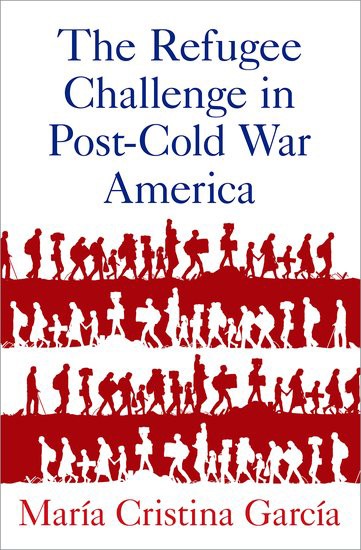García book explores history, complexities of U.S. refugee policy
By Daniel Aloi
Historian María Cristina García, the Howard A. Newman Professor of American Studies in the Departments of History and Latina/o Studies, examines the challenges and history of refugee and asylum policy in the United States in her new book, “The Refugee Challenge in Post-Cold War America.”
García provides an accessible overview of U.S. policy before and after 1989 and, through interviews with refugee advocates and policymakers, details the challenges in the 21st century of reconciling domestic national security with humanitarian obligations to refugees and asylum-seekers.
“One of the challenges of writing about recent political history is that circumstances can change dramatically from one administration to the next,” García said. “I never imagined that Americans would elect Trump and that the new president would then try to reduce the U.S. refugee quota to a bare-boned 50,000 visas, and bar admissions from particular countries altogether. But one of the points that I argue in this book is that the United States has accommodated refugees through a variety of statuses. That will most likely continue to be true.”
While the overall quota may be smaller, she said, “refugees will likely continue to enter the U.S. through the asylum process, through the ‘parole’ process and through temporary protected status, which allows people from some countries to work in the U.S. until the State Department and Homeland Security determine that it’s safe to return.”
García also believes that the United States, along with the rest of the international community, “is reneging on its obligations.” Less than 1 percent of the world’s refugees are resettled in the top 10 resettlement nations (which include the U.S., Canada, Australia and Germany), she noted.
“Most refugees are forced to settle in the countries that border areas of crisis,” she said. They either settle in United Nations Refugee Agency camps or they “live and work in the underground economies of major cities, waiting for their chance to return home. Here in Ithaca, many of our new neighbors spent a decade or more in refugee camps before they were allowed to immigrate.”
Populations potentially eligible for humanitarian protection include victims of civil unrest, genocide, environmental disasters, trafficking and gender discrimination.
“Now more than ever, Americans must advocate on behalf of populations that are in dire need of humanitarian assistance,” García said. “Post-Cold War history has shown that advocacy is enormously influential in shaping the contours of refugee and asylum policy – who is admitted to the United States, and in what numbers.”
García teaches in the Department of History and the Latina/o Studies Program. Her research for the book was supported in part by a 2013-14 residential fellowship at the Woodrow Wilson International Center for Scholars. She is president of the Immigration and Ethnic History Society and the recipient of a 2016 Andrew Carnegie Fellowship supporting research for her next book, “Climate Refugees: The Environmental Origins of Refugee Migrations.”
Her other books are “Havana USA: Cuban Exiles and Cuban Americans in South Florida, 1959-1994” (1996) and “Seeking Refuge: Central American Migration to Mexico, the United States, and Canada” (2006), on northward migration caused by civil wars in El Salvador, Guatemala and Nicaragua.
Media Contact
Get Cornell news delivered right to your inbox.
Subscribe